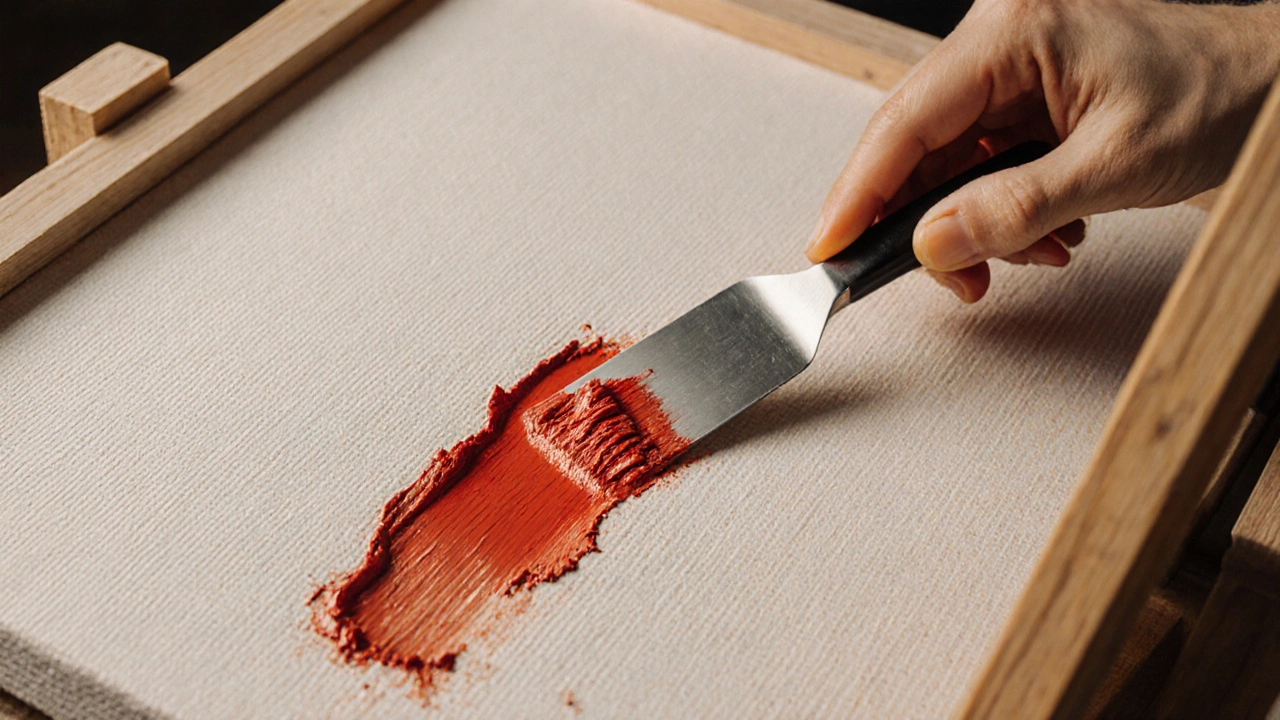Palette Knife: Tools, Techniques & Texture in Modern Painting
When working with palette knife, a flat, blunt tool used to spread and sculpt paint directly on the surface. Also known as painting knife, it lets artists create bold, textured effects without brushes. Palette knife work often starts with oil paint, a slow‑drying pigment medium prized for its rich color and blendability. By dragging the knife across the canvas, you can achieve impasto, a method of applying paint in thick, three‑dimensional layers that catches light and adds depth. In short, palette knife enables impasto, and impasto builds texture that makes a painting pop.
Why Artists Choose a Palette Knife
First, the tool gives you control over texture that brushes can’t match. A single swipe can create ridge‑like peaks, smooth plains, or knife‑cut edges. This range is why many modern painters blend knife work with mixed media – layering charcoal, pastel, or even collage under the paint. Second, oil paint reacts well to the knife’s pressure, allowing you to sculpt forms before the paint sets. Third, the technique speeds up work on large canvases; you can cover big areas in minutes, a advantage highlighted in our post about the best oil painting sizes for 2025.
Palette knife isn’t limited to oil paint. Acrylics and water‑based media also respond, especially when mixed with a little medium to keep the paint pliable. When you activate the paint with the right solvent – as described in our guide on oil paint activation – the knife glides smoother, reducing unwanted streaks. Likewise, choosing the proper canvas matters: a primed linen surface holds the thick layers better than a cheap cotton weave, a point covered in our article on the best canvas for oil painting.
Beyond the basics, the knife opens doors to advanced tricks. Glazing over a knife‑applied base can brighten dull areas, a technique we explain in our brightening oil painting guide. Scumbling – lightly dragging dry paint over a dry layer – works hand‑in‑hand with knife textures to create atmospheric effects. Artists who master these combos often see their work standing out in gallery selections, a topic we explore in the piece about what galleries look for in an artist.
When you start experimenting, keep three things in mind: the angle of the knife, the amount of pressure, and the consistency of your paint. A shallow angle yields thin lines, while a steep angle pushes the paint up into pronounced ridges. Too much pressure can crack the surface once the paint dries, especially on large formats – another reason why knowing the best-selling art print sizes matters for commercial success. And finally, adjusting paint consistency with medium ensures the knife leaves clean edges rather than clumps.
The palette knife also fits into broader art trends. In 2025, many creators blend traditional impasto with digital overlays, creating hybrid pieces that bridge physical texture and virtual enhancement. This crossover mirrors the rise of AI‑generated art discussed in our modern art styles roundup. Whether you’re a beginner looking for a fresh way to add depth, or a seasoned painter seeking new textures, the knife offers a versatile path.
Below you’ll find articles that dive deeper into canvas choices, size trends, brightening tricks, and more – giving you practical steps to master your palette knife work and elevate every painting you create.
